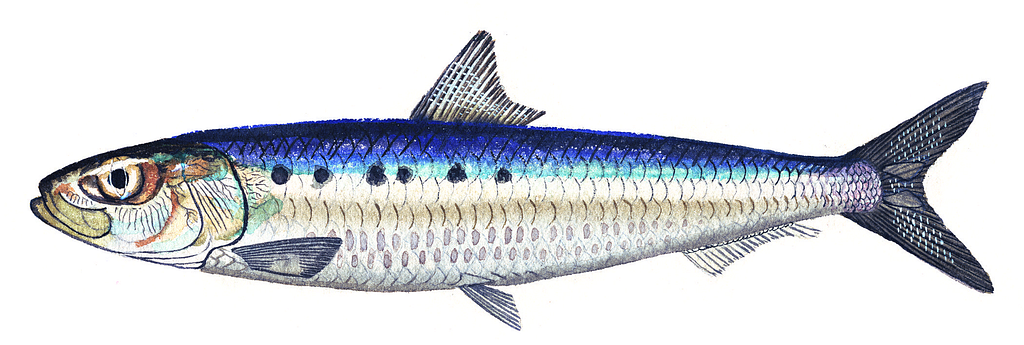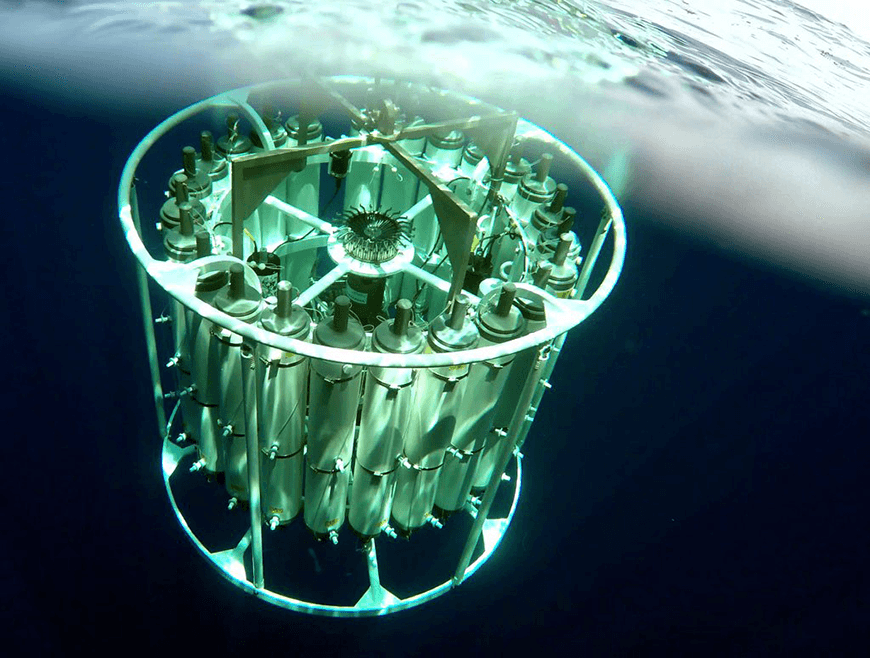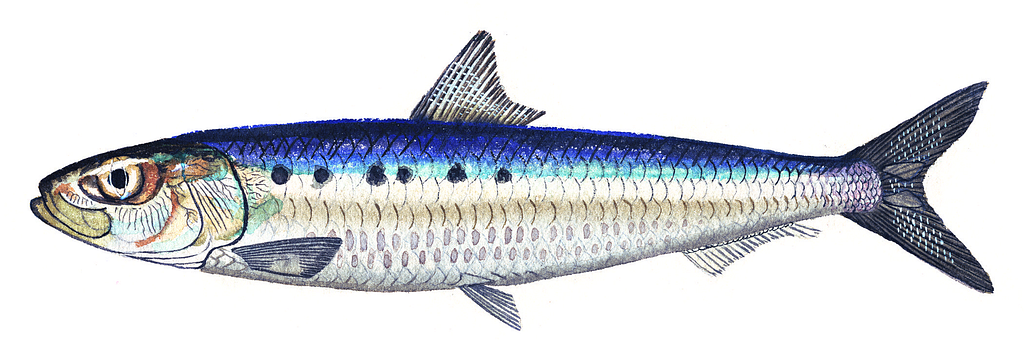

Developing an oceanographic application for big game fishing
I’m going to tell a science story, just for fun, because I’m retired, and I have time, and it is interesting. It’s not a technical story about how I built our Fishing Maps product. It’s about my journey from being a fisheries scientist with no interest in industry, to becoming an unlikely entrepreneur selling a high tech mapping product to fishers, with a huge range of different technical abilities and knowledge. It is not a story about wild success, far from it, but it’s not about failure of a startup either. It is a tale about fish, which should amuse my colleagues who know that I don’t really like fish, even though I’m a fisheries oceanographer (see Confessions of an Oceanographer). I’m more of a plankton guy.
When I started out as a brash oceanography grad student in the early 1980s I had no interest in working for industry. I thought I’d be a university professor (that didn’t happen). When the phone rang in the biological oceanography lab at Dalhousie we used to joke that it was Scripps calling to offer one of us a job. That call never came, but we all graduated anyway and went our separate ways. My path led me down a long series of postdocs and research associateships, and then into “permanent” jobs as a government scientist in New Zealand, Australia and California. I did eventually work for 11 years as the NOAA lead for the CalCOFI program, at the SWFSC on the UCSD Scripps campus in San Diego.
While travelling down that road, I watched with amazement, and sometimes with admiration, how some of my colleagues applied their skills to becoming science entrepreneurs. Some were successful, and some were not. One got into remote sensing and then into instrument development, becoming very successful quite quickly. Another struggled to keep a deep-sea camera business going. Some turned their modelling skills from government stock assessment to private consultancy. Others set up an acoustic survey company. One developed a tracking system for fish that has become famous. Their efforts fascinated me, but the entrepreneurial track never appealed. I was too busy writing research papers. It never occurred to me that I’d take that path one day.

Fast forward 37 years (1985 to 2022). During my career as a fisheries oceanographer I learned about three things that fueled entry into entrepreneurship: programming, remote sensing, and fishers. When I was a student, spreadsheets on a luggable computer were a revelation. I spent so much time looking at a green screen that the chalk on a blackboard turned pink. Later on, when I got into fisheries acoustics, spreadsheets lost their allure as the data exceeded 10,000 rows and hundreds of columns. I had to learn to code my analyses. I’d already written thousands of lines of Turbo Pascal to control an experimental system that I designed during my first postdoc, so coding wasn’t new to me. It took me a while though. I learned R in my 40s, NCL in my 50s and Python in my 60s. I learned the languages the way a lot of scientists do, by using them to code analyses for discrete projects that led to publications. Eventually I learned to stitch the scripts together using shell scripting to create reproducible workflows combining R and Python. I took on becoming a Linux user, and worked with open source software. I became an avid proponent of open-acess data, open source software, and reproducible open science.
I’d always been fascinated by satellite remote sensing, which literally exploded on the science scene during my career. I quickly went from using a few remote sensing images in my papers to requesting data from NASA. I was bemused and excited to receive a box of CDs full of data from the Coastal Zone Color Scanner and later, from other sensors. Handling these data was a puzzle. Each CD had dozens of very large files, as HDFs, or some other inscrutable format. What to do with it all? My software couldn’t open the files. The CDs sat on my office shelves for years, a monument to my frustration. Was NASA really sending CDs to everyone who requested data? I didn’t know, but I suspect that they were. I progressed to using the different GUIs that NASA and NOAA fielded. They were great for viewing a few images, but clumsy for research purposes. I experimented with FTP, but never made much much progress until systems were developed to permit the data to be accessed, and subset directly from your analysis code without massive download redundancy. Accessing remote sensing data became easy, efficient, and scriptable using R and Python.
After I moved from plankton research into applied fisheries research, I came into contact with fishers and representatives of fishing companies as part of my work. I sat through endless planning sessions, stock assessment meetings, and program reviews where commercial fishers and upper level industry managers were present. I attended meetings where we presented scientific results to fishers, NGO representatives and other stakeholders. I realised that commercial fishers have a degree of respect for the scientific assessment process, but that they are also deeply suspicious of the scientific results. Their views are rooted in their experience, and can be difficult to shift in the face of scientific evidence that is often incomplete. They often don’t trust the process and resent it when the government fisheries managers have the whip hand. Their livelihoods are at stake, and that’s a fierce motivator. They sometimes don’t see the government scientists as objective, and there are often chronic differences in interpretation of evidence concerning status of the stocks. I found the meetings stressful, but it did give me some insight into the way that fishers think. That would prove useful later when I began selling remote sensing maps to recreational big game fishers.
I retired from NOAA Fisheries and the CalCOFI program in 2018 and returned to New Zealand. It was quite liberating not to have to attend meetings, but I couldn’t bring myself to leave science behind. I began to learn Python and started toying with an idea that I had to make satellite remote sensing maps for recreational big game fishers.
There were several false starts and dead ends along the way before I developed a robust working product. The idea was to use my oceanographic knowledge create maps of Sea Surface Temperature (SST) and other ocean variables like chlorophyll and currents that could be used to guide sport fishers to locations where they would be most likely to catch a marlin or a tuna. The concept changed radically along the way. Initially I had planned to sell individual maps for a very small fee with the idea that it would be a low value, high volume product. We would sell maps online for less than the price of a cup of coffee. This concept failed miserably, and proved hard to implement from the technical side as well. I had also intended to provide maps for any region of the world, but soon realised that this too was problematic, not just in terms of computing time required, but also because I wanted to be familiar with the oceanography of the region that we were offering maps for. We began to make some headway by offering a package of maps for regions focused on the game fishing ports of New Zealand, California and Baja California, which are regions that I know well from my work as an oceanographer.
The next challenge was how to become known as a fishing map provider. There are established companies already in the market so the challenge was not just to become visible, but also to get a market share. I started posting on a Facebook group page for recreational fishers in New Zealand and attracted the attention of a couple of fishers who had a science background. They approached me and offered invaluable advice on what they would like to see in the maps from a fishers perspective. Then we were approached by the company that manages the New Zealand Big Game Fishing Facebook group. We entered a profit sharing agreement with them, but dissolved the relationship after 6 months because, despite the best intentions, the arrangement was not working in our favour. We were able to grow the business significantly in the first year with virtually all of our early subscribers from New Zealand. Breaking into the California/ Baja market is proving more difficult because there is more established competition.


Big game fishing is very seasonal, so one of the challenges is to maintain motivation when subscriptions drop off after the summer fishing season. Another challenge is to manage anxiety about whether the subscribers will return the following year. A new startup like this is definitely not a profit making business in the early stages. Revenue got ploughed back into new computer equipment, website development, and marketing costs. My partner in Fishing Maps (my wife) is an accountant and auditor who tracks the finances and keeps us within reasonable bounds for expenditure relative to revenue. It was audacious to enter this market where there are established competitors, but one thing I realised is that the other companies are also run by very small teams, in some cases by one one or two people, just like us. One of the distinguishing features of our product is our detailed blogs and articles, explaining oceanography for game fishing accurately in plain language. We set out to fill a perceived gap in a niche market, bringing high quality satellite maps backed by oceanographic knowledge to a regionally-focused potential market. The development process for the maps continues to develop. Receiving feedback from fishers can be challenging, but it leads to improvements. Seeing the product from the outside can be as confronting and demotivating as receiving a negative review on a scientific paper. On the other hand it is an opportunity to focus improvements in very effective ways. Nevertheless it’s impossible to balance the hours invested in development against the financial yields in a startup like ours.
We are now part of the new wave of digital entrepreneurs, working from home with negligible overheads, a fast Internet connection, and the knowledge to create a high-tech product. The science is fun and always evolving. The marketing is less appealing. Writing the blogs and articles for non-specialists is a huge change from writing scientific articles, but it can be rewarding. The view from my study over the beautiful Waitakere Ranges to the heads of the Manukau Harbour here in New Zealand reminds me that anything is possible when you have open data, open source software, programming skills, the time, and the will to try something audacious.
Journey of an unlikely entrepreneur was originally published in Towards Data Science on Medium, where people are continuing the conversation by highlighting and responding to this story.
Originally appeared here:
Journey of an unlikely entrepreneur
Go Here to Read this Fast! Journey of an unlikely entrepreneur
